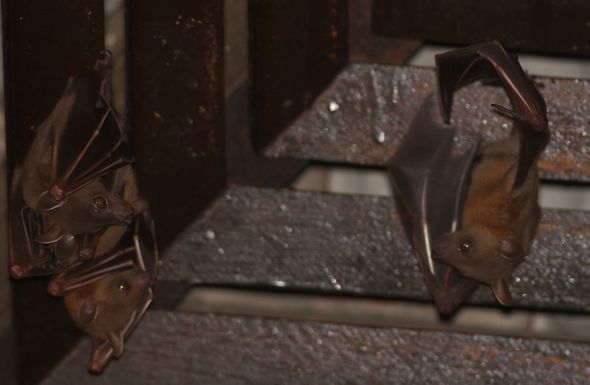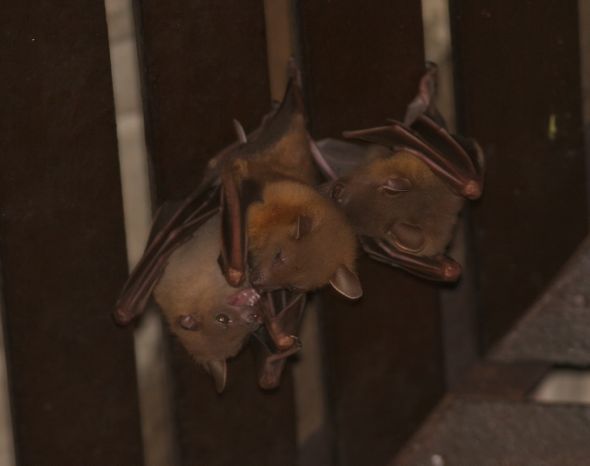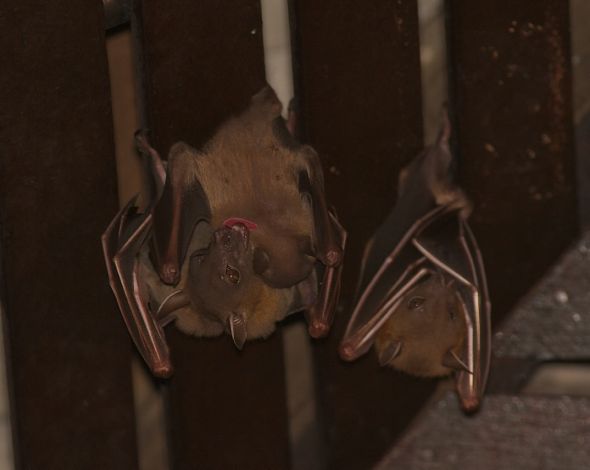“On this particular evening, the roost was occupied by less than half a dozen Common Fruit Bats (Cynopterus brachyotis). The key players were the alpha male, two adults with one suckling a pup and a few others (see video above).
“The alpha male was actively courting the adult suckling a pup, extending his wings and flapping them. After some time another adult moved towards the pair but not in a confrontational way. The alpha male slowly moved off.
“Based on the collar colour of the approaching adult, it appears to be similar to that of the alpha male (on the right, in the image above – photographs were taken as the scene unfolded to provide clearer details than as seen in the video). After all, the male’s collar is a dark orange-red while that of the female is yellow-orange LINK. Admittedly, in practice it is not that easy to distinguish the sexes as the colour varies.
“And according to Dr Christine Fletcher who is studying insectivorous bats at the Forest Research Institute of Malaysia in Kepong, Malaysia, the only sure way of verifying the sexes is to look at the genitals. Unfortunately there were no opportunities to do so as far as these two adults were concerned.
“Whatever the sex of the two adults, the pup appeared comfortable with both, sometimes ending in the embrace of one and at other times in the embrace of the other adult (above, below).
“The three were even seen all clustered together (below).
“Towards the latter part of the video, the roost saw more bats flying in, interrupting the confrontation between these three (two adults and pup) and the alpha male. Finally the two adults flew off from the perch, followed by the pup.
“According to Crichton & Krutzsch (2000), both sexes take care of the young and males play an active role in lactation and feeding the young. And males of some species of fruit bats have functional mammary glands (Francis et al., 1994).
“So it is possible that the two adults involved with the pup were a male and a female.”
YC Wee
Singapore
7th September 2014
References:
1. Crichton, E. G. & P. H. Krutzsch (2000). Reproductive Biology of Bats. San Diego, CA: Academic Press.
2. Francis, C. M., E. L. P. Anthony, J. A. Brunton & T. H. Kunz (1994). Lactation in male fruit bats. Nature 367: 691-692.












